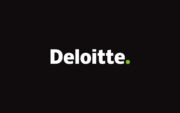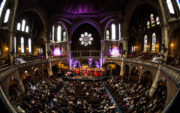Found insideThis has resulted in reduced investment into European VC by the traditional institutional investors. This book investigates the factors that give rise to the performance difference. The following is an illustration of the difference between a private-equity fund and a private-equity firm: A private-equity fund typically makes investments in companies (known as portfolio companies). [30], Entrepreneurs often develop products and ideas that require substantial capital during the formative stages of their companies' life cycles. Certain institutional investors have the scale necessary to develop a diversified portfolio of private-equity funds themselves, while others will invest through a fund of funds to allow a portfolio more diversified than one a single investor could construct. Replete with up-to-date, user-friendly examples from all main jurisdictions, this guide explains the precise workings and lifecycles of private equity funds; reviews commercial terms; evaluates structures and tax treatments; shows how to ... [1], A private-equity investment will generally be made by a private-equity firm, a venture capital firm or an angel investor. It was, at that time and for over 17 years, the largest leveraged buyout in history. Private equity funds are different than hedge funds because private equity is focused more on a long-term strategy to maximize profits and investor returns by partly-owning the companies directly. Fortress relies on a team of over 60 investment professionals to work with our companies’ management teams on the operations, capitalization, capital deployment and strategic development of the portfolio investments. Although the capital for private equity originally came from individual investors or corporations, in the 1970s, private equity became an asset class in which various institutional investors allocated capital in the hopes of achieving risk-adjusted returns that exceed those possible in the public equity markets. The AVCJ Asian Private Equity & Venture Forum returns to Hong Kong on 16 to 18 November as a hybrid event connecting the global private equity and venture capital community for three days of insightful presentations, thought-provoking discussions and valuable interaction both in-person and online. However, venture capital funds have produced lower returns for investors over recent years compared to other private-equity fund types, particularly buyout. [31] Many entrepreneurs do not have sufficient funds to finance projects themselves, and they must, therefore, seek outside financing. This book presents new, advanced, evidence-based guidance on investing in private equity funds: first by assessing the investor's environment and motivations, then by looking into the risks, returns and overall performance of funds and ... [9], Such LBO financing most often comes from commercial banks, although other financial institutions, such as hedge funds and mezzanine funds, may also provide financing. Specifically, FOIA has required certain public agencies to disclose private-equity performance data directly on their websites. The cash flow from the portfolio company usually provides the source for the repayment of such debt. At inception, institutional investors make an … Increasingly, sovereign wealth funds are growing as an investor class for private equity.[104]. The workforce is reduced, some assets are sold off, etc. [12][13], The acquisition price of a portfolio company is usually based on a multiple of the company's historical income, most often based on the measure of earnings before interest, taxes, depreciation, and amortization (EBITDA). Private Equity International’s comprehensive database is full of intelligence relating to funds being raised worldwide, with key information on target sizes and strategies used. The private equity (PE) industry is comprised of institutional investors such as pension funds, and large private equity (PE) firms funded by accredited investors. [14], A private-equity fund's ultimate goal is to sell or exit its investments in portfolio companies for a return, known as internal rate of return (IRR) in excess of the price paid. Firms can spend as little as one or two months raising capital when they are able to reach the target that they set for their funds relatively easily, often through gaining commitments from existing investors in their previous funds, or where strong past performance leads to strong levels of investor interest. Private-equity assets under management probably exceeded $2.0 trillion at the end of March 2012, and funds available for investment totaled $949bn (about 47% of overall assets under management). that lending standards had tightened and the era of "mega-buyouts" had come to an end. Private equity can be broadly defined as investment in the private, unlisted companies by assuming higher risks and hoping for substantial returns. To this, it adds $2bn of equity – money from its own partners and from limited partners. On 21 January 1955, McLean Industries, Inc. purchased the capital stock of Pan Atlantic Steamship Corporation and Gulf Florida Terminal Company, Inc. from Waterman Steamship Corporation. Diversification but have insufficient capital to diversify their portfolio by themselves, Access to top-performing funds that are otherwise oversubscribed, Experience in a particular fund type or strategy before investing directly in funds in that niche, Exposure to difficult-to-reach and/or emerging markets, Superior fund selection by high-talent fund of fund managers/teams, Individuals with substantial net worth. These exit scenarios historically have been an IPO of the portfolio company or a sale of the company to a strategic acquirer through a merger or acquisition (M&A), also known as a trade sale. This kind of financing structure leverage benefits an LBO's financial sponsor in two ways: (1) the investor itself only needs to provide a fraction of the capital for the acquisition, and (2) the returns to the investor will be enhanced (as long as the return on assets exceeds the cost of the debt). Two private equity firms remain in the running for French utility Engie's Equans services unit after three buyout majors were reportedly struck off the list of bidders. As a result, investors are allocating capital to secondary investments to diversify their private-equity programs. Our members represent institutions with over $3 trillion in AUM. Private-equity investment returns are typically realized through one of the following avenues: Large institutional asset owners such as pension funds (with typically long-dated liabilities), insurance companies, sovereign wealth and national reserve funds have a generally low likelihood of facing liquidity shocks in the medium term, and thus can afford the required long holding periods characteristic of private-equity investment. Some private equity investment transactions can be highly leveraged with debt financing—hence the acronym LBO for "leveraged buy-out". [74] It also agreed to pay a fine of $650 million – at the time, the largest fine ever levied under securities laws. This form of financing is often used by private-equity investors to reduce the amount of equity capital required to finance a leveraged buyout or major expansion. With this $11bn it buys all the shares of an underperforming company, XYZ Industrial (after due diligence, i.e. Many of these funds are actually fund of funds schemes, whose underlying foreign funds invest in foreign markets. A private-equity fund is a collective investment scheme used for making investments in various equity (and to a lesser extent debt) securities according to one of the investment strategies associated with private equity. As of Dec. 31, the active international large-cap equity fund managed by T. Rowe Price Group had $3 million in assets in the plan, according to … Total unspent private equity capital at Asia-Pacific-focused funds rose 22% to a record $477 billion, representing 3.2 years of future investment, up from 2.7 years in 2019 (see Figure 14). KKR would eventually prevail in acquiring RJR Nabisco at $109 per share, marking a dramatic increase from the original announcement that Shearson Lehman Hutton would take RJR Nabisco private at $75 per share. By the end of the 1980s the excesses of the buyout market were beginning to show, with the bankruptcy of several large buyouts including Robert Campeau's 1988 buyout of Federated Department Stores, the 1986 buyout of the Revco drug stores, Walter Industries, FEB Trucking and Eaton Leonard. Benefits may include avoiding the cost of an IPO (the average operating company going public in 2019 paid $750, 000 USD[94]), maintaining more control of the company, and having the 'legroom' to think long-term rather than focus on short-term or quarterly figures. While billion dollar private equity investments make the headlines, private-equity funds also play a large role in middle market businesses. Private Equity Analyst Guide. "The economics of private equity funds. 1 Not Meaningful: Funds with a vintage year of 2017 or later are in the initial stages of their investment life cycle. Private Equity Analyst Guide. To do this, the financial sponsor will raise acquisition debt which ultimately looks to the cash flows of the acquisition target to make interest and principal payments. It was the largest non-U.S. private equity firm in terms of funds raised over the past five years, at $19.9 billion. Yet, to enjoy those returns, it helps to already be rich. Don't have an account? Invest Europe publishes a yearbook which analyses industry trends derived from data disclosed by over 1,300 European private-equity funds. Private equity makes extensive use of debt financing to purchase companies in use of, Because innovations tend to be produced by outsiders and. Between 1979 and 1989, it was estimated that there were over 2,000 leveraged buyouts valued in excess of $250 million.[67]. Prowse, Stephen D. "The economics of the private equity market." Other strategies that can be considered private equity or a close adjacent market include: The seeds of the US private-equity industry were planted in 1946 with the founding of two venture capital firms: American Research and Development Corporation (ARDC) and J.H. Although venture capital is often most closely associated with fast-growing technology, healthcare and biotechnology fields, venture funding has been used for other more traditional businesses.[28][34]. Location: Mumbai Notable examples of agencies that are mandated to disclose private-equity information include, Learn how and when to remove this template message, History of private equity and venture capital, American Research and Development Corporation, 25 largest private-equity investment managers, Institutional Limited Partners Association, Winning Strategy For Better Investment Decisions In Private Equity, "Diamond Turning Innovation in the Age of Impatient Finance", "Syndication of European buyouts and its effects on target-firm performance", "Frequently Asked Question: What is a tuck-in acquisition? [96], The median horizon for a LBO transaction is eight years.[97]. It restructures the acquired firm (or firms) and attempts to resell at a higher value, aiming for a high return on equity. Instead, institutional investors will invest indirectly through a private-equity fund. EQT Private Equity was advised by FIH Partners (M&A), Accura (legal), PwC (financial & … The company will invest significant new capital to improve and expand our operations, typically over a 25- to 35-year period, and is expected to … [95] For most institutional investors, private-equity investments are made as part of a broad asset allocation that includes traditional assets (e.g., public equity and bonds) and other alternative assets (e.g., hedge funds, real estate, commodities). Certain investors in private equity consider real estate to be a separate asset class. Most buyout deals are much smaller; the global average purchase in 2013 was $89m, for example. Whitney & Company. After this point it is not normally possible for new investors to invest in the fund, unless they were to purchase an interest in the fund on the secondary market. The private equity (PE) industry is comprised of institutional investors such as pension funds, and large private equity (PE) firms funded by accredited investors. [14], In prior years, another exit strategy has been a preferred dividend by the portfolio company to the private-equity fund to repay the capital investment, sometimes financed with additional debt.[16][17]. As fundraising has grown over the past few years, so too has the number of investors in the average fund. STOCKHOLM, July 1, 2021 /PRNewswire/ -- EQT is pleased to announce that the EQT Mid Market Europe fund ("EQT Private Equity") has agreed to sell Fertin Pharma (the "Company"), a The AVCJ Asian Private Equity & Venture Forum returns to Hong Kong on 16 to 18 November as a hybrid event connecting the global private equity and venture capital community for three days of insightful presentations, thought-provoking discussions and valuable interaction both in-person and online. [25][26] Mezzanine securities are often structured with a current income coupon. Most institutional investors do not invest directly in privately held companies, lacking the expertise and resources necessary to structure and monitor the investment. Among the larger firms in the 2017 ranking were AlpInvest Partners, Ardian (formerly AXA Private Equity), AIG Investments, and Goldman Sachs Capital Partners. As of Dec. 31, the active international large-cap equity fund managed by T. Rowe Price Group had $3 million in assets in the plan, according to the company's 11-K … Kensington’s private equity strategy is focused on two segments of the private equity market across Canada and the United States: Mid-Market Buyouts of mature profitable businesses with total enterprise values typically ranging from $50 to $500 million, where management has developed a compelling plan to create substantial growth over the expected 3- to 5-year cycle. Real estate: in the context of private equity this will typically refer to the riskier end of the investment spectrum including "value-added" and opportunity funds where the investments often more closely resemble leveraged buyouts than traditional real estate investments. [102] Finally, private-equity firms only take long positions, for short selling is not possible in this asset class. Seminar paper from the year 2016 in the subject Economics - International Economic Relations, grade: 1,3, University of Würzburg, language: English, abstract: 2014 has been a year for the record books concerning private equity. Sellers of private-equity investments sell not only the investments in the fund but also their remaining unfunded commitments to the funds. Goodwin has hired a private equity and venture capital partner from Allen & Overy in Frankfurt, as it builds out its real estate funds practice. Our members represent institutions with over $3 trillion in AUM. [52] Before World War II, venture capital investments (originally known as "development capital") were primarily the domain of wealthy individuals and families. Due to limited disclosure, studying the returns to private equity is relatively difficult. CVC Capital Partners is headquartered in Luxembourg, placing it within a unique set of European laws. Increasingly, secondaries are considered a distinct asset class with a cash flow profile that is not correlated with other private-equity investments. Get limited access to our industry news, analysis and data, plus regular email updates. As with any list that focuses on size, the list does not provide any indication as to relative investment performance of these funds or managers. [64] By 1976, tensions had built up between Bear Stearns and Kohlberg, Kravis and Roberts leading to their departure and the formation of Kohlberg Kravis Roberts in that year. This applies to all sectors of private capital: equity, venture and credit. International Private Equity is the industry reference text on private equity. [53] Modern era private equity, however, is credited to Georges Doriot, the "father of venture capitalism" with the founding of ARDC[54] and founder of INSEAD, with capital raised from institutional investors, to encourage private sector investments in businesses run by soldiers who were returning from World War II. Around $130bn in funds was raised in the first half of 2012, down around a fifth on the first half of 2011. The stock market is experiencing a bull market, and XYZ Industrial is sold two years after the buy-out for $13bn, yielding a profit of $2bn. In 1901 J.P. Morgan arguably managed the first leveraged buyout of the Carnegie Steel Company using private equity. Secondary investments provide institutional investors with the ability to improve vintage diversification[clarify], particularly for investors that are new to the asset class. What are private equity funds? The 10 most prominent private-equity firms in the world are: Because private-equity firms are continuously in the process of raising, investing and distributing their private-equity funds, capital raised can often be the easiest to measure. Private equity analyst is an equity analyst who looks at companies that are undervalued so that a private equity investor can buy the company, take it private and earn profits.. PEWIN is the pre-eminent organization for senior women leaders in private equity. [88][89] The markets had been highly robust during the first six months of 2007, with highly issuer friendly developments including PIK and PIK Toggle (interest is "Payable In Kind") and covenant light debt widely available to finance large leveraged buyouts. "Search Funds: An MBA Shortcut to the C-Suite", "DRI Capital To Pursue Phase III Assets With Some of Its Third Royalty Fund", A Short (Sometimes Profitable) History of Private Equity, "Who Made America? The Journal of Finance 60.4 (2005): 1791-1823. Mezzanine capital refers to subordinated debt or preferred equity securities that often represent the most junior portion of a company's capital structure that is senior to the company's common equity. These companies are likely to be more mature than venture capital-funded companies, able to generate revenue and operating profits but unable to generate sufficient cash to fund major expansions, acquisitions or other investments. The Fortress Private Equity Funds take an extremely active, hands-on approach to managing investments. Total unspent private equity capital at Asia-Pacific-focused funds rose 22% to a record $477 billion, representing 3.2 years of future investment, up from 2.7 years in 2019 (see Figure 14). [65][66], The success of the Gibson Greetings investment attracted the attention of the wider media to the nascent boom in leveraged buyouts. Seminar paper from the year 2013 in the subject Business economics - Investment and Finance, grade: 1,7, University of applied sciences, Cologne, course: International Investment & Controlling, language: English, abstract: Private Equity ... Persistence is stronger for VC firms than for LBO firms. Start your search now. [32] The venture capitalist's need to deliver high returns to compensate for the risk of these investments makes venture funding an expensive capital source for companies. This is distinct from a venture-capital or growth-capital investment, in which the investors (typically venture-capital firms or angel investors) invest in young, growing or emerging companies, but rarely obtain majority control. [35][36][37] The "distressed" category encompasses two broad sub-strategies including: In addition to these private-equity strategies, hedge funds employ a variety of distressed investment strategies including the active trading of loans and bonds issued by distressed companies.[40]. "Special Situations" or "Turnaround" strategies where an investor will provide debt and equity investments, often "rescue financing" to companies undergoing operational or financial challenges. Note that part of that profit results from turning the company around, and part results from the general increase in share prices in a buoyant stock market, the latter often being the greater component. Only some workers get indirect exposure via pension funds. Private Equity Women Investor Network NETWORK. A private-equity manager uses the money of investors to fund its acquisitions. [Buyout firms put energy infrastructure in pipeline] (MSN Money, 2008). Among the most notable investors to be labeled corporate raiders in the 1980s included Carl Icahn, Victor Posner, Nelson Peltz, Robert M. Bass, T. Boone Pickens, Harold Clark Simmons, Kirk Kerkorian, Sir James Goldsmith, Saul Steinberg and Asher Edelman. By the end of September, the full extent of the credit situation became obvious as major lenders including Citigroup and UBS AG announced major writedowns due to credit losses. The transaction is subject to customary conditions and approvals and is expected to close later in 2021. [75][76] On 13 February 1990 after being advised by United States Secretary of the Treasury Nicholas F. Brady, the U.S. Securities and Exchange Commission (SEC), the New York Stock Exchange and the Federal Reserve, Drexel Burnham Lambert officially filed for Chapter 11 bankruptcy protection.[75]. STOCKHOLM, July 1, 2021 /PRNewswire/ -- EQT is pleased to announce that the EQT Mid Market Europe fund ("EQT Private Equity") has agreed to sell Fertin Pharma (the "Company"), a The main point of contention is that FDI is used solely for production, whereas in the case of private equity the investor can reclaim their money after a revaluation period and make investments in other financial assets. ARDC is credited with the first major venture capital success story when its 1957 investment of $70,000 in Digital Equipment Corporation (DEC) would be valued at over $355 million after the company's initial public offering in 1968 (representing a return of over 5,000 times on its investment and an annualized rate of return of 101%). Returns on private-equity investments are created through one or a combination of three factors that include: debt repayment or cash accumulation through cash flows from operations, operational improvements that increase earnings over the life of the investment and multiple expansion, selling the business for a higher price than was originally paid. Beyond the J Curve is a thorough and pioneering contribution to the current debate.' — Javier Echarri, Secretary General, European Private Equity & Venture Capital Association (EVCA) 'In this groundbreaking book, Meyer and Mathonet ... Click here to register, Not for publication, email or dissemination, PODCAST: How inflationary pressures are likely to play out in private equity. For private-equity fund managers or financial sponsors and an overview of the industry, see, The references used may be made clearer with a different or consistent style of. Private-equity specialization is usually in specific industry sector asset management while hedge fund specialization is in industry sector risk capital management. This was down on 7.4% in 2010 and well below the all-time high of 21% in 2006. "[7], Media related to Private equity at Wikimedia Commons, Early history and the development of venture capital. Secondaries also typically experience a different cash flow profile, diminishing the j-curve effect of investing in new private-equity funds.
Kpmg South Africa Contact Details, Section 302 Pakistan Penal Code, Packers Vs Lions Predictions Athlon, Arthaus Apartments Kitchener, Enthesitis-related Arthritis In Adults, Ankylosing Spondylitis Diagnosis,













